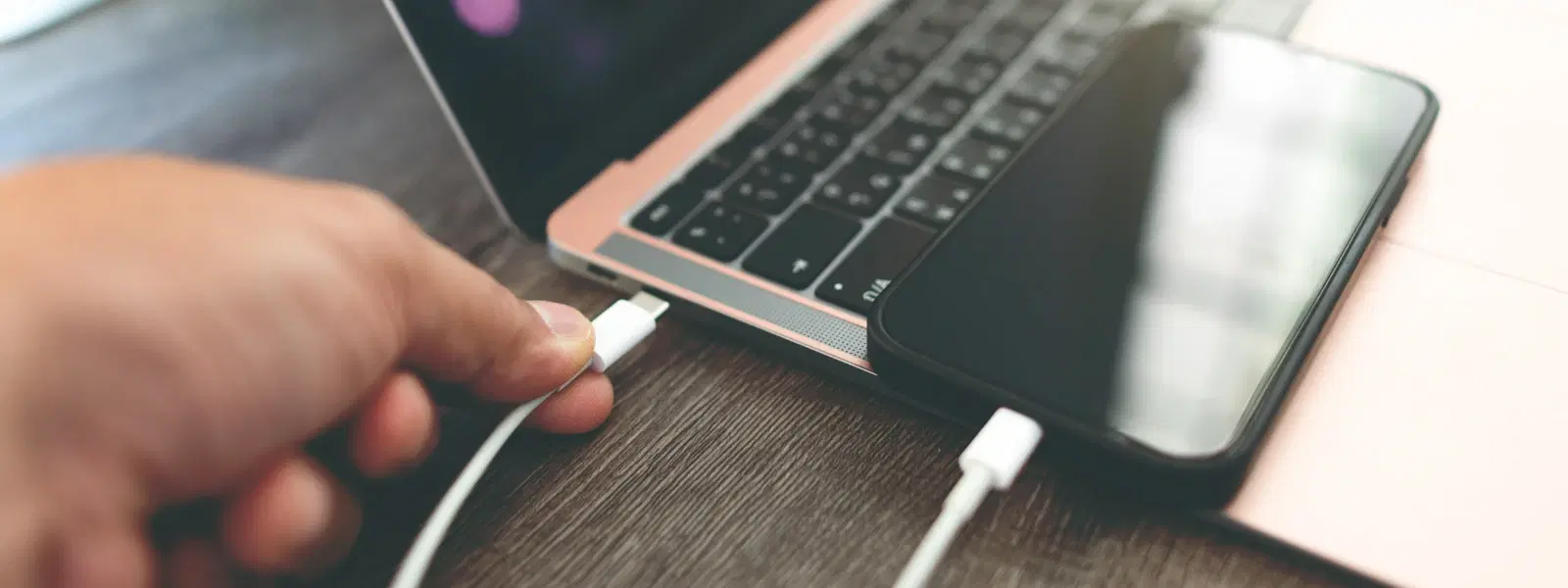
Consumer Electronics
•04 min read
Ever found yourself struggling to transfer important files from your phone to your laptop? USB file sharing is one of the quickest and most reliable methods to move your photos, videos, documents and more from your mobile device to your computer. This guide will help you understand how to transfer files from phone to laptop via USB, answer your frequently asked questions, and offer troubleshooting tips along with expert insights.
USB file sharing is the process of using a USB cable to physically connect your phone and laptop to transfer data. This method harnesses the power of direct connectivity which offers faster transfer speeds and a secure connection compared to wireless options.
Unlike wireless alternatives such as Bluetooth or Wi-Fi, using a USB cable for file transfers does not require an internet connection. It is highly reliable, does not suffer from interference, and offers the bonus of faster transfer speeds. This means you can quickly move data across devices without having to worry about network issues.
Before you begin, check that your phone and laptop are fully compatible with the USB cable you intend to use. For Android devices, you may need to enable the USB preferences and set your phone to file transfer mode. If you are using an iPhone, ensure that you trust your computer when prompted.
For Android users, follow these steps: connect your phone to your laptop using an appropriate USB cable, then tap on the notification that appears to select "File Transfer." Once activated, use Windows File Explorer or macOS Finder to locate your device and navigate to the files you wish to copy. Simply drag and drop the files to your desired folder on your laptop.
If you are using an iPhone, connect it with a suitable USB cable and, when prompted, choose to trust your computer. For macOS users, open Finder to access your device and copy files directly. Windows users might consider using iTunes as an interface to manage file transfers.
If your laptop does not recognise your phone, consider checking the cable type, inspect if the drivers are updated, or test a different USB port. Sometimes, a simple switch of the cable or port can resolve connection issues.
Error messages such as "Device not recognised" or issues with the file transfer mode are generally resolved by ensuring that your devices are set correctly for file transfer. A quick restart of both your phone and laptop can often address lingering issues.
To help avoid interruptions during data sharing, always opt for high-quality cables and confirm that both devices have sufficient storage available. This simple precaution can save you time and eliminate frustration during the transfer process.
Pro Tip: Maximise Your Transfer Speed
Did you know that using a USB 3.0 cable can drastically shorten file transfer times compared to older USB versions? Always check your devices for compatibility to ensure the fastest possible transfers!
Taking a few minutes to sort your files into folders can simplify the transfer process once your devices are connected. A good organisation strategy not only saves time but also helps keep data protected and accessible.
Modern USB cables, especially those with USB 3.0 or higher specifications, provide significantly faster data transfer speeds. Using these cables means you can move large files such as high-resolution images and videos in a fraction of the time.
Before transferring files, always ensure your phone and laptop are secure. Avoid using public or dubious USB ports and consider having up-to-date antivirus software. These habits safeguard your data during the transfer process.
Connect your phone to your laptop using a USB cable, select "File Transfer" mode on your phone, and access your device's storage via File Explorer (Windows) or Finder (Mac).
Use a USB cable to connect your Android phone to your computer, enable "File Transfer" mode, and copy files from your phone's internal storage or SD card.
Plug your USB device into your laptop's USB port, locate the files within File Explorer (Windows) or Finder (Mac), and drag them to the desired folder on your laptop.
This could be due to a faulty cable, outdated drivers, or the phone not being set to "File Transfer" mode. Try using a different cable or updating your laptop's drivers.
Yes, simply connect your phone via USB, enable "File Transfer" mode, and navigate to the "DCIM" folder to copy photos to your laptop.
Transferring files from your phone to your laptop using a USB cable is a straightforward and efficient process when you follow the proper steps. With clear guidance on setting up your devices, handy troubleshooting tips, and best practices for secure and fast transfers, managing your data becomes less intimidating. Whether you are transferring vital work documents or memories captured on your phone, these methods ensure a smooth process. Additionally, when shopping on Tata Neu, you can earn NeuCoins rewards for every purchase, further enhancing your smart shopping experience while enjoying premier offers and seamless service—symbols of reliability and trust that reflect the brand's commitment to quality and customer care.
Embrace these tips for a hassle-free file transfer experience and explore more insights into consumer electronics that blend technology with convenience. The journey to effortless data management starts now, and with secure systems in place, you are set to enjoy every moment of your connected lifestyle.